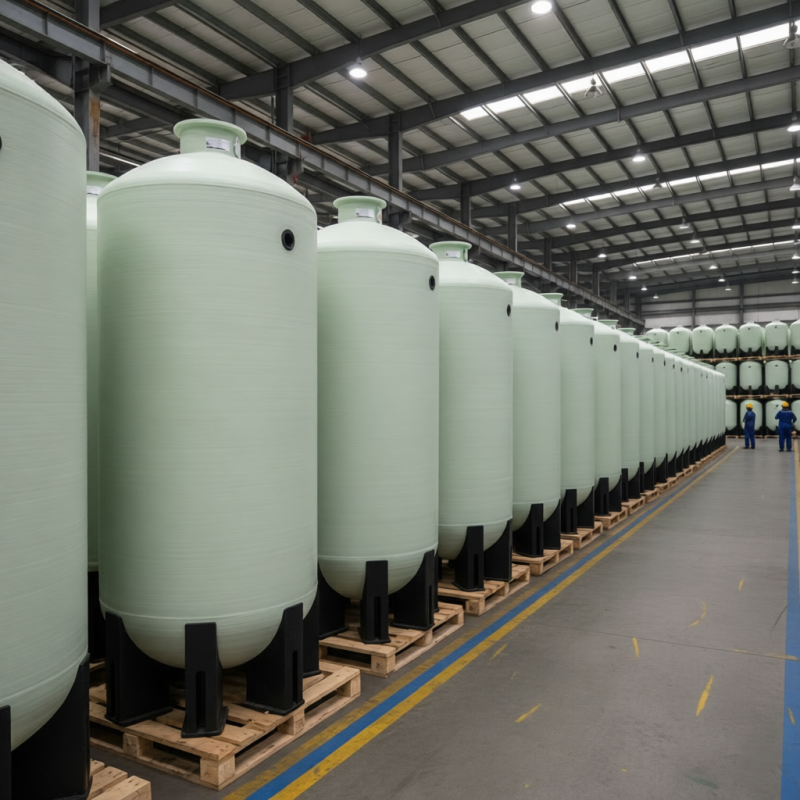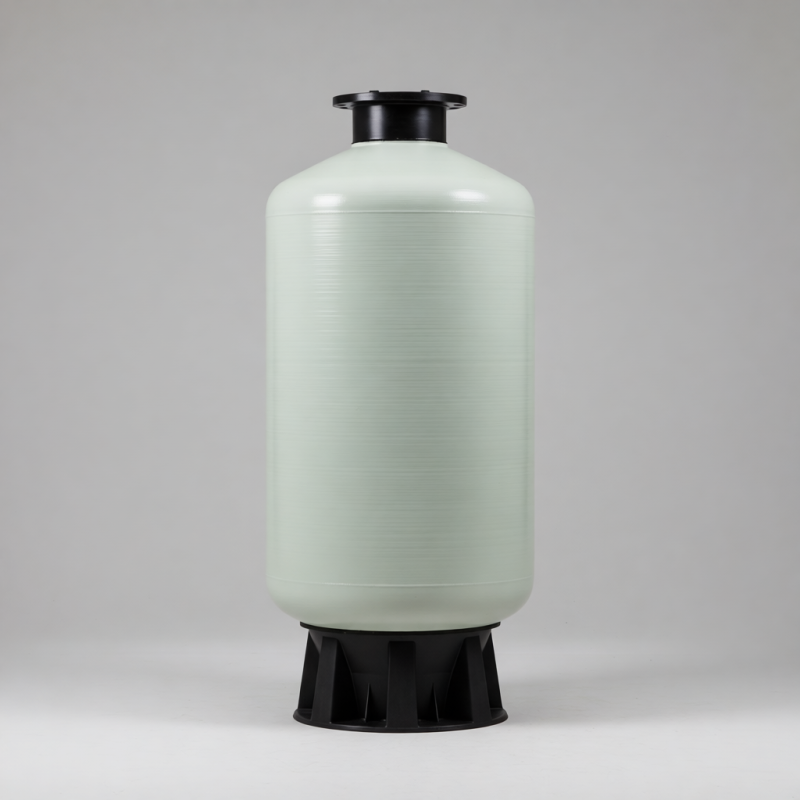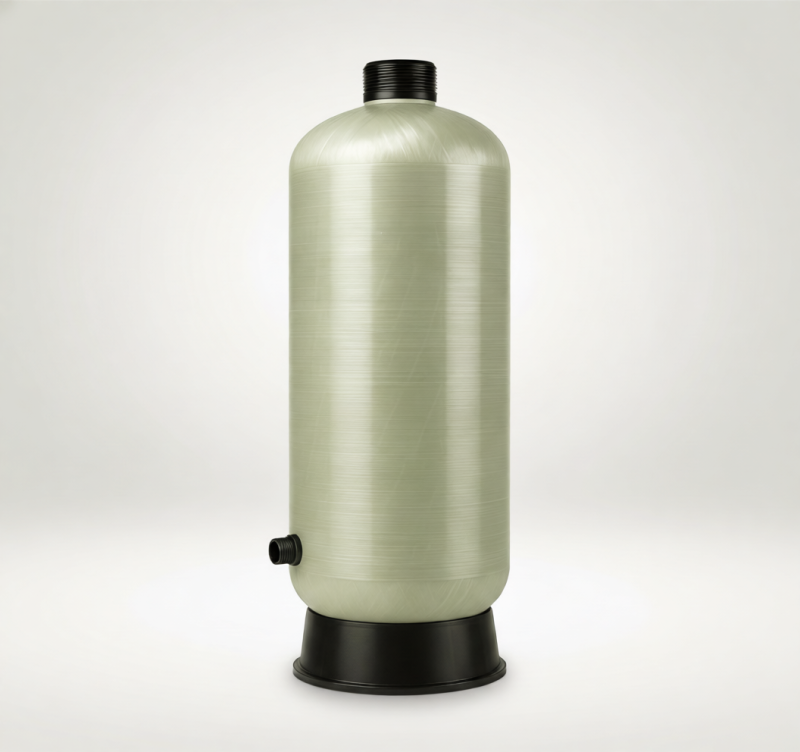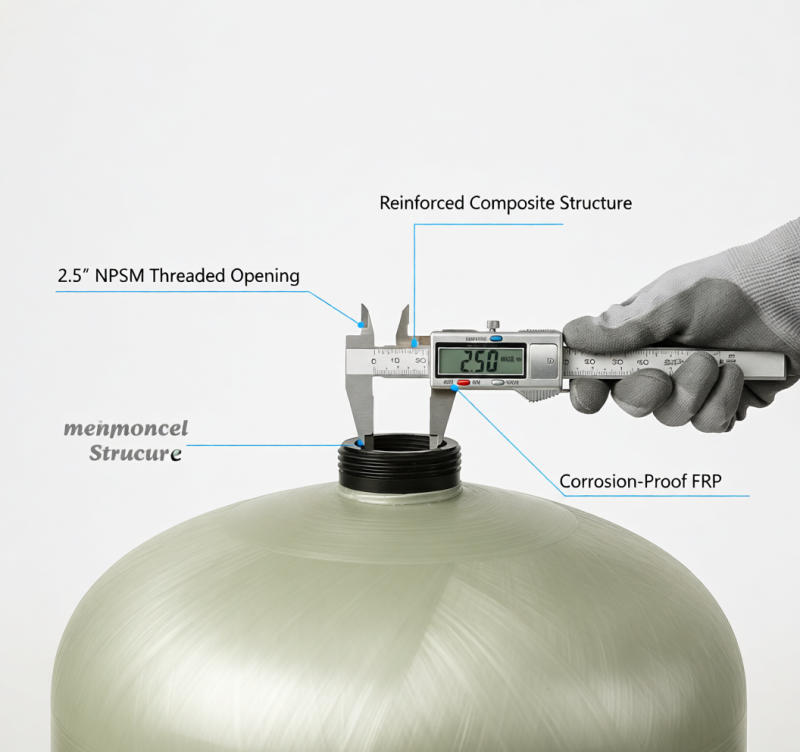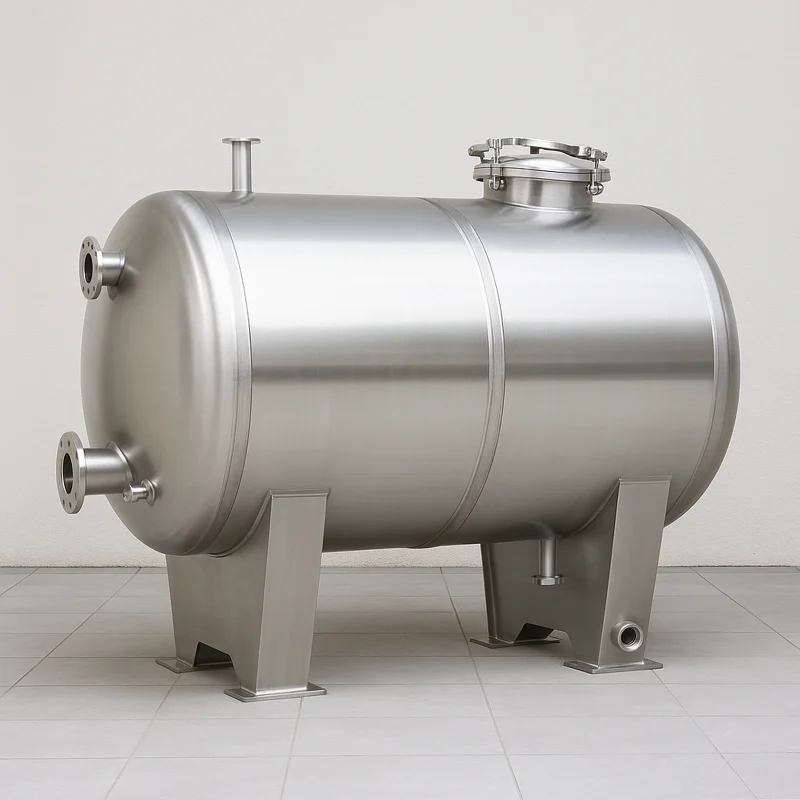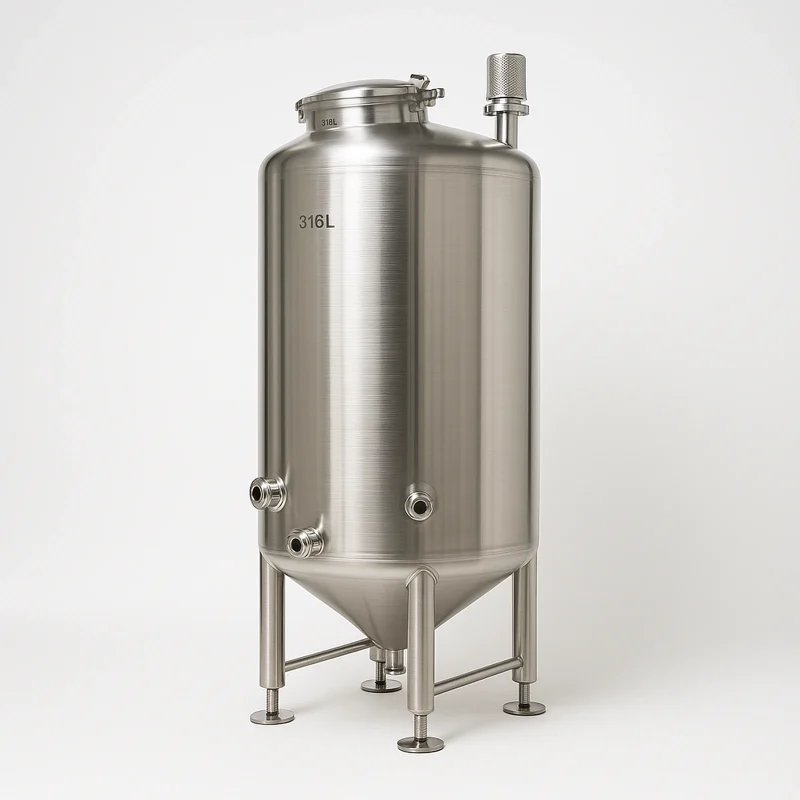2000L Vertical Stainless Steel Water Tank
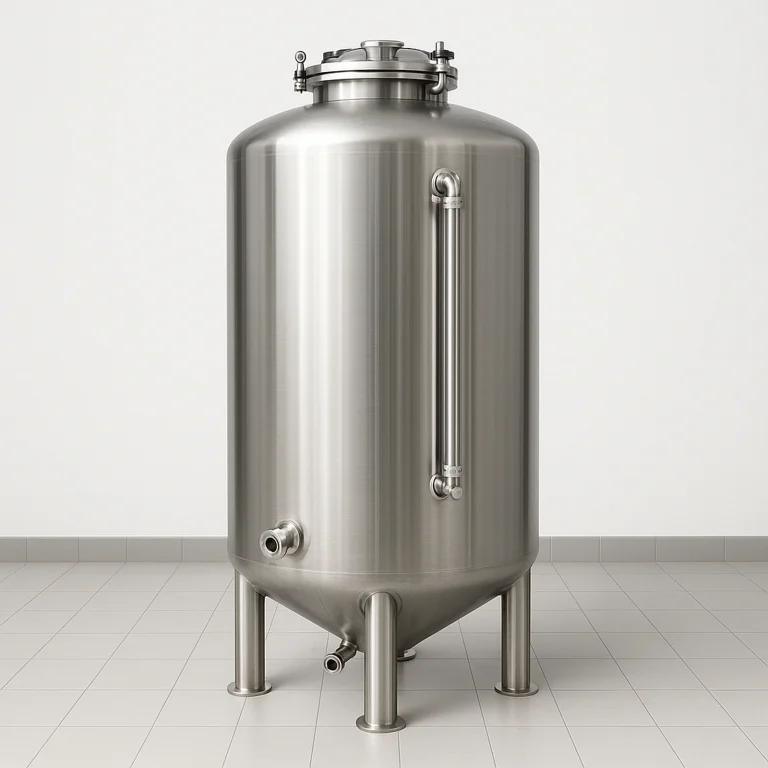
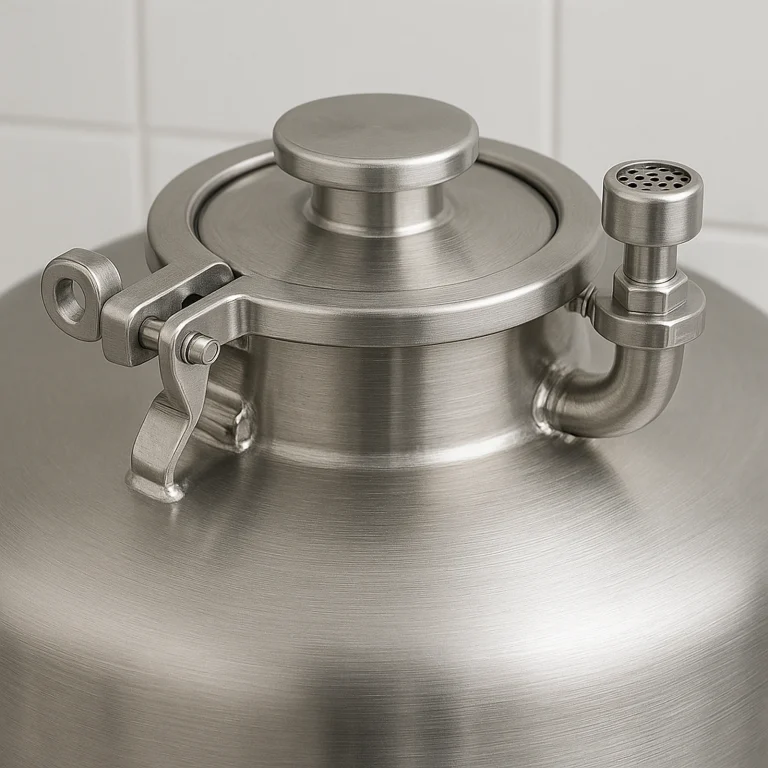
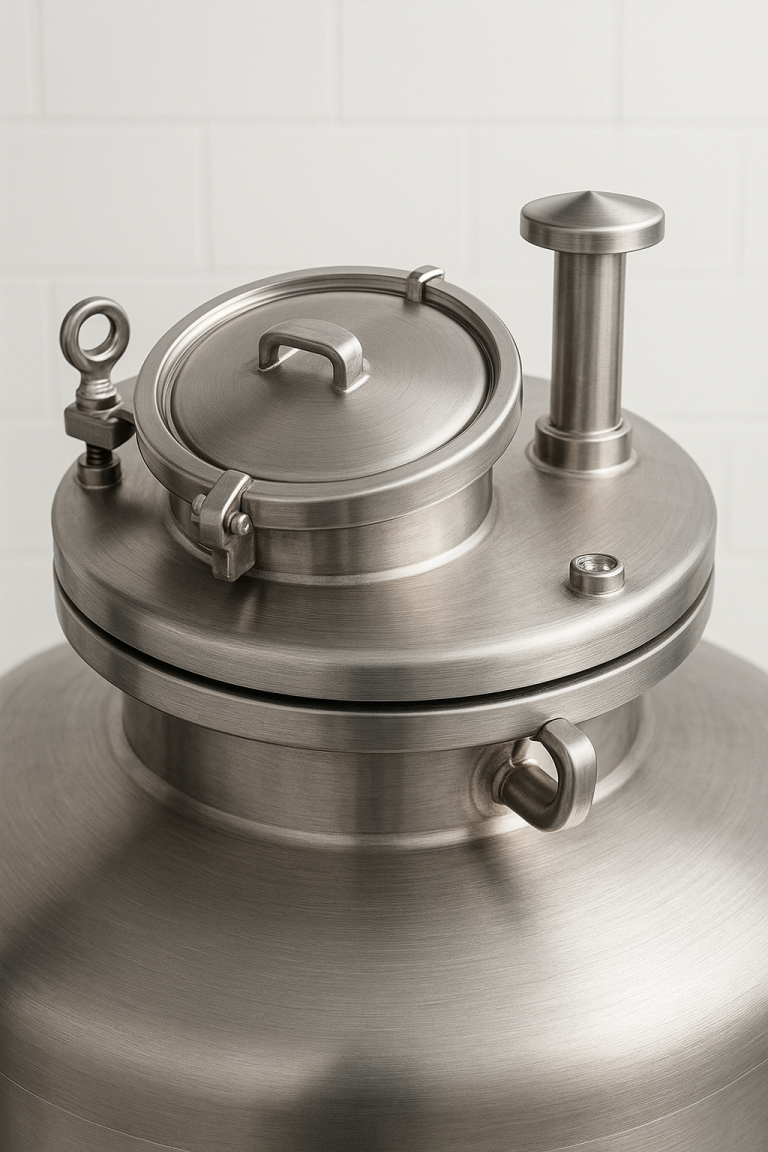
2000L Vertical Stainless Steel Water Tank
A practical 2000L vertical stainless steel water tank for RO/DI and process water. Built in 304 or 316L with sanitary TIG welding and validated passivation, the tank uses a conical bottom for fast drain-down and easy cleaning. Adjustable legs save floor space, while a top manway simplifies inspection. Tri-clamp or flanged ports are available. Leak or hydrostatic test and material certificates can be provided.
A practical 2000L vertical stainless steel water tank for RO/DI and process water. Built in 304 or 316L with sanitary TIG welding and validated passivation, the tank uses a conical bottom for fast drain-down and easy cleaning. Adjustable legs save floor space, while a top manway simplifies inspection. Tri-clamp or flanged ports are available. Leak or hydrostatic test and material certificates can be provided.
Where it fits
The 2000L vertical tank serves mid-scale plants that need stable buffer capacity without taking much floor space. The vertical layout and conical bottom shorten the liquid path to the outlet and reduce cleaning time between batches.
Design and construction
• Orientation: vertical on adjustable legs or skirt base
• Material: 304 or 316L stainless steel (project specific thickness)
• Interior finish: brushed as standard; mirror or electropolish available for lower Ra targets
• Manway: top quick-open with EPDM or silicone gasket
• Connections: tri-clamp sanitary as standard; ANSI/DIN flanges optional
• Drainage: lowest-point outlet with internal slope to minimize hold-up
Documents and tests
• Leak or hydrostatic test report
• Material certificates (e.g., EN 10204 3.1)
• Passivation record; optional weld map and surface roughness report
• Basic GA and nozzle schedule to support installation planning
Options that add value
• Insulation with stainless jacket for chilled or hot service
• Spray ball (fixed or rotating) for CIP coverage
• Level gauge or transmitter; thermometer; sight glass; calibration strip
• Sterile vent port for high-purity service
Use notes and limitations
• Standard build is atmospheric and vented; for pressure service specify design pressure and applicable code at RFQ stage.
• For higher chlorides or hot cleaning chemistry, choose 316L and follow a controlled cleaning program.
• Confirm headroom for manway swing and instrument access during layout.
| Parameter | Typical Specification (2000L Vertical) |
|---|---|
| Capacity | 2000 L (atmospheric, vented) |
| Layout | Vertical on adjustable legs; conical bottom to lowest-point outlet |
| Material | 304 or 316L stainless steel |
| Thickness (reference) | Shell/head 2.5 to 3.0 mm (project specific) |
| Interior finish | Brushed (typ. Ra 0.8–1.6 um); mirror or electropolish optional |
| Connections | Tri-clamp sanitary as standard; ANSI/DIN flanges optional |
| Nozzles (typ.) | Inlet DN25–DN40; Outlet DN40–DN50; Drain DN25; Vent DN25; CIP DN25; Instrument DN20 |
| Manway | Top quick-open, 300–400 mm |
| Reference dimensions | Dia. 1100–1300 mm; straight height 2000–2400 mm (without nozzles) |
| Options | Insulation with SS jacket, spray ball, sterile vent, level gauge/transmitter, sight glass |
| Documents | Leak/hydrostatic test, material certificates, passivation record; optional weld map and surface report |
• Water treatment: RO/DI buffer and utility water storage for mid-scale plants
• Pharmaceutical and biotech utility rooms (with sterile vent option)
• Beverage and food: process water or batching support in compact rooms
• Cosmetics and personal care lines requiring fast cleanout and easy inspection
• Retrofit projects where floor space is limited but headroom is available
Where it fits
The 2000L vertical tank serves mid-scale plants that need stable buffer capacity without taking much floor space. The vertical layout and conical bottom shorten the liquid path to the outlet and reduce cleaning time between batches.
Design and construction
• Orientation: vertical on adjustable legs or skirt base
• Material: 304 or 316L stainless steel (project specific thickness)
• Interior finish: brushed as standard; mirror or electropolish available for lower Ra targets
• Manway: top quick-open with EPDM or silicone gasket
• Connections: tri-clamp sanitary as standard; ANSI/DIN flanges optional
• Drainage: lowest-point outlet with internal slope to minimize hold-up
Documents and tests
• Leak or hydrostatic test report
• Material certificates (e.g., EN 10204 3.1)
• Passivation record; optional weld map and surface roughness report
• Basic GA and nozzle schedule to support installation planning
Options that add value
• Insulation with stainless jacket for chilled or hot service
• Spray ball (fixed or rotating) for CIP coverage
• Level gauge or transmitter; thermometer; sight glass; calibration strip
• Sterile vent port for high-purity service
Use notes and limitations
• Standard build is atmospheric and vented; for pressure service specify design pressure and applicable code at RFQ stage.
• For higher chlorides or hot cleaning chemistry, choose 316L and follow a controlled cleaning program.
• Confirm headroom for manway swing and instrument access during layout.
| Parameter | Typical Specification (2000L Vertical) |
|---|---|
| Capacity | 2000 L (atmospheric, vented) |
| Layout | Vertical on adjustable legs; conical bottom to lowest-point outlet |
| Material | 304 or 316L stainless steel |
| Thickness (reference) | Shell/head 2.5 to 3.0 mm (project specific) |
| Interior finish | Brushed (typ. Ra 0.8–1.6 um); mirror or electropolish optional |
| Connections | Tri-clamp sanitary as standard; ANSI/DIN flanges optional |
| Nozzles (typ.) | Inlet DN25–DN40; Outlet DN40–DN50; Drain DN25; Vent DN25; CIP DN25; Instrument DN20 |
| Manway | Top quick-open, 300–400 mm |
| Reference dimensions | Dia. 1100–1300 mm; straight height 2000–2400 mm (without nozzles) |
| Options | Insulation with SS jacket, spray ball, sterile vent, level gauge/transmitter, sight glass |
| Documents | Leak/hydrostatic test, material certificates, passivation record; optional weld map and surface report |
• Water treatment: RO/DI buffer and utility water storage for mid-scale plants
• Pharmaceutical and biotech utility rooms (with sterile vent option)
• Beverage and food: process water or batching support in compact rooms
• Cosmetics and personal care lines requiring fast cleanout and easy inspection
• Retrofit projects where floor space is limited but headroom is available

